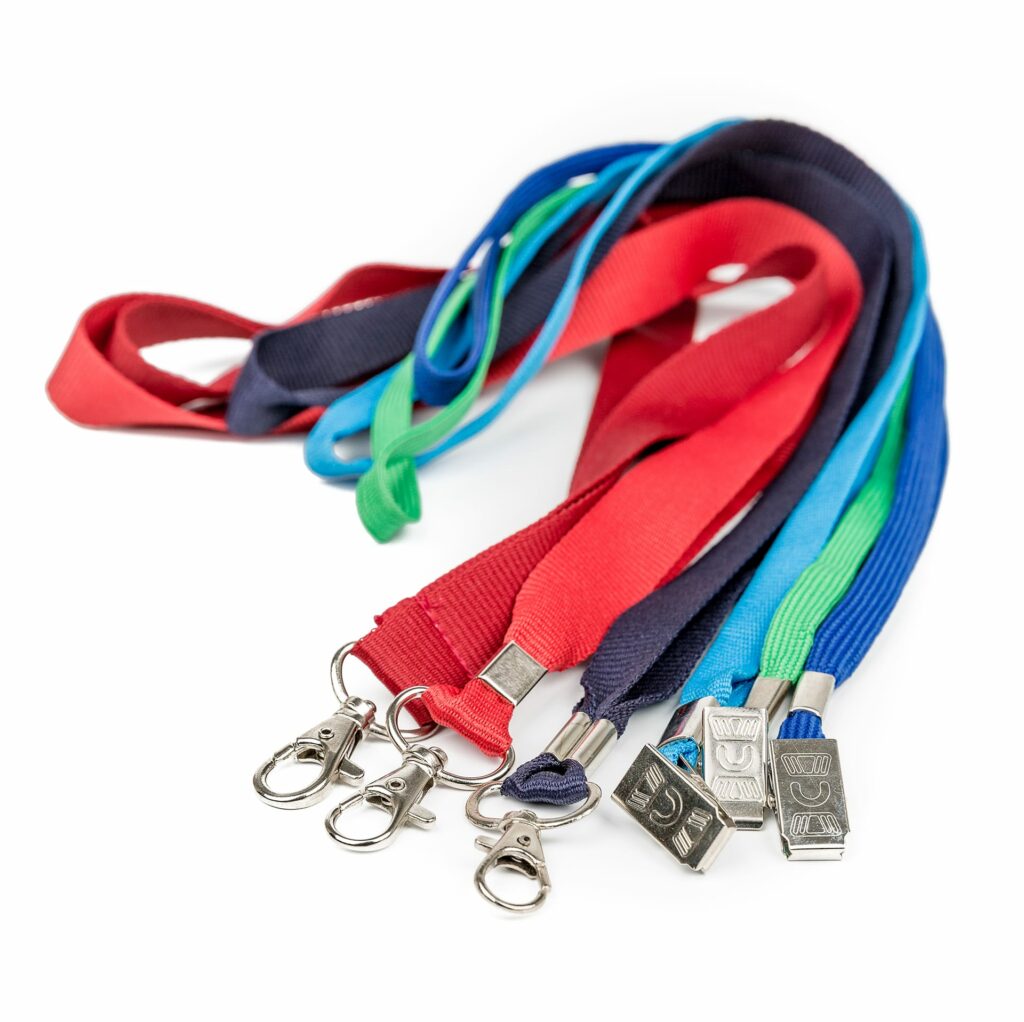Lanyards are a common sight not just in schools and offices, but also in trade shows, conventions, even concerts, and other similar events. Most brands and companies use them, alongside custom printable wristbands, for marketing and promotional purposes, and while it isn’t clear when this kind of usage actually began, it’s undeniable that customized lanyards are effective for these functions.
To boost exposure, the name of a company name or a specific brand or product is the most usual lanyard “design.” However, there are many ways still to maximize the small space that’s afforded to you by a lanyard. Here are some things to consider.
When it comes to color contrast for lanyards, it usually follows the light text on dark background (or vice versa) principle, which has served many organizations well. However, you can take it a step further by having lanyards produced in a contrasting color with clothing — this works especially well in schools, offices, and other places that require uniforms . This way, the lanyard itself will stand out and it’s easier to draw the eyes to what is printed on the lanyard.
If you already have a specific color in mind, Wristband Creation will make sure that it is replicated exactly through the help of the Pantone Matching System. We also suggest that you use clean, easily readable fonts (here are some top choices); an attention-grabbing lanyard may not work as well if what is written isn’t decipherable even in close quarters.
Put the Most Important Details on Chest Level
This is the most visible part of the lanyard, so it’s only logical to put whatever you want to promote in this section, whether it’s text, a logo, or both. What’s more, placing the most important information front and center ensures that it will not be covered by collars, coats, jackets, and other similar items of clothing. You may also want to opt for nylon lanyards — this high-quality, durable synthetic fabric has a slight sheen to it, which makes it stand out even more against the matte of most clothes.
Draw the Eyes Down
While the chest area is the most visible, there are also other ways to draw attention to other parts of the lanyard. For example, you can design your lanyard so that most of the elements are located toward the bottom to draw the eyes to that area. You can also use color gradations and put the darkest or brightest colors on the bottom, near the attachments, again so that the eyes will automatically go to that section.
Drive Usage
Lanyards are most commonly used as ID laces, but you certainly don’t have to confine your designs for that purpose. For example, if your guests are car or motorcycle enthusiasts, you might want to give them a lanyard with an ring attachment to hold the key/s to their vehicle/s. If you have the money for it, you can even provide various attachments that can be interchanged with the use of plastic buckles or breakaways. By giving the recipients more reasons to use your lanyards, you will also receive the maximum visibility for your brand or organization.
Don’t Rely on Just Text or Images
There is definitely nothing wrong with using your company’s name and/or logo to design your lanyards, but there are so many other elements that you can use. For example, you can initiate a game by printing a step or instruction on the lanyard, like Googling a specific search term related to your company. You can also print QR codes that, when scanned, will launch a website or an interactive environment. You might even considering having the QR codes embroidered on a woven lanyard instead of the usual printing to add more texture, visually and physically.
Lanyards are small and relatively unobtrusive so people are more accepting of them, making them one of the best items for brand recall. Keep these tips in mind the next time you want to use lanyards for your marketing activities, to make these effective promotional materials even more effective.

